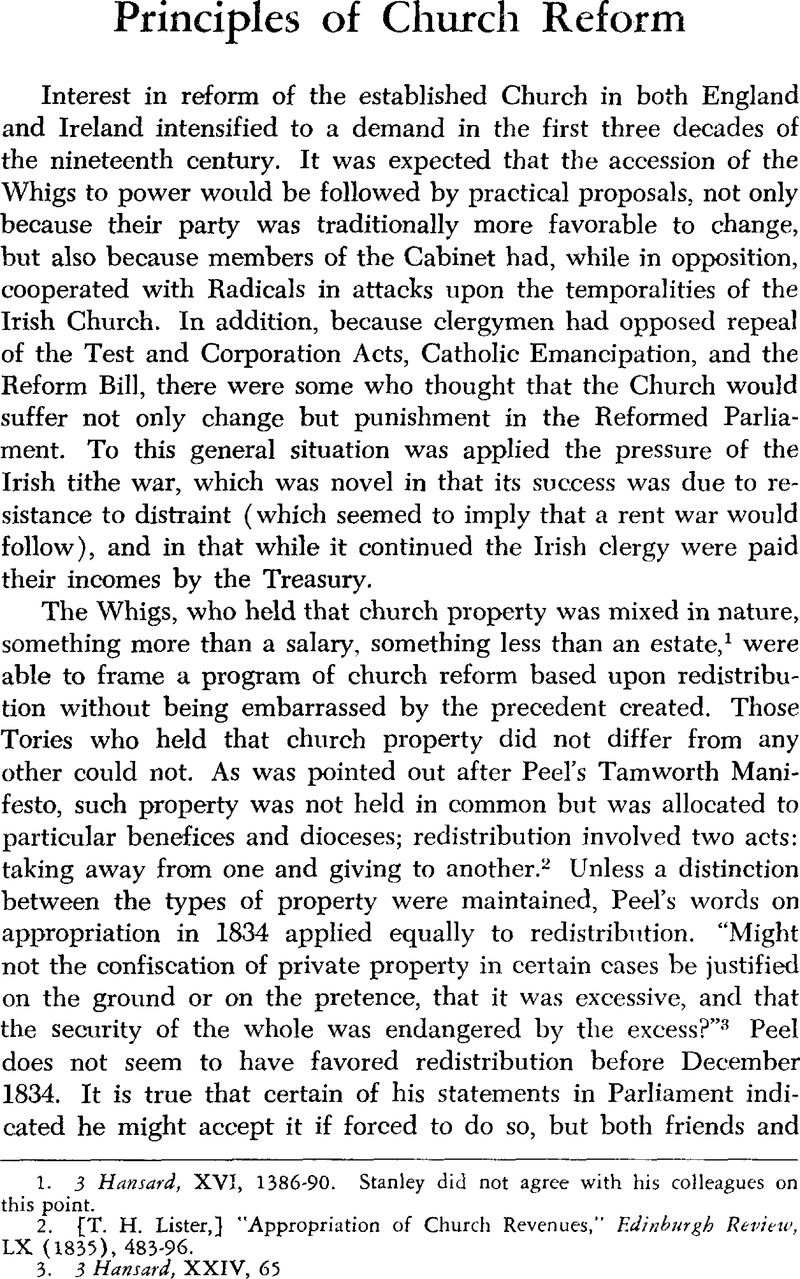No CrossRef data available.
Article contents
Principles of Church Reform
Published online by Cambridge University Press: 16 January 2014
Abstract

- Type
- Reply
- Information
- Copyright
- Copyright © North American Conference of British Studies 1964
References
1. 3 Hansard, XVI, 1386–90. Stanley did not agree with his colleagues on this point.
2. [Lister, T. H.,] “Appropriation of Church Revenues,” Edinburgh Review, LX (1835), 483–96Google Scholar.
3. 3 Hansard, XXIV, 65Google Scholar
4. Croker to Peel, Feb. 2, 1835, Parker, C. S. (ed.), Sir Robert Peel from his Private Papers (London, 1889), II, 284Google Scholar; Lister, , “Church Revenues,” Edinburgh Review, LX (1835), 484–85Google Scholar.
5. [Southey, R.,] “The Roman Catholic Question — Ireland,” Quarterly Review, XXXVIII (1828), 535–98Google Scholar; Coleridge, S. T., On the Constitution of the Church and State (London, 1830)Google Scholar; “Principles of Church Reform,” [Stanley, A. P. (ed.),] The Miscellaneous Works of Thomas Arnold (London, 1845), pp. 257–338Google Scholar.
6. Stanley, A. P., The Life and Correspondence of Thomas Arnold (Boston, 1868), I, 281–83Google Scholar. Arnold did not write on the 1833 Act, but see his letter of June 11, 1834, for his comment on the secession in the ministry; he thought church property should be applied, in part, to Roman Catholic clergymen, or to education, but not to “the merely physical or ordinary objects of government.” Ibid., I, 335-37.
7. “The Right and Wrong of State Interference with Corporation and Church Property,” Jurist, Feb., 1833Google Scholar. Reprinted in Mill, J. S., Dissertations and Discussions (London, 1859), I, 39Google Scholar.


